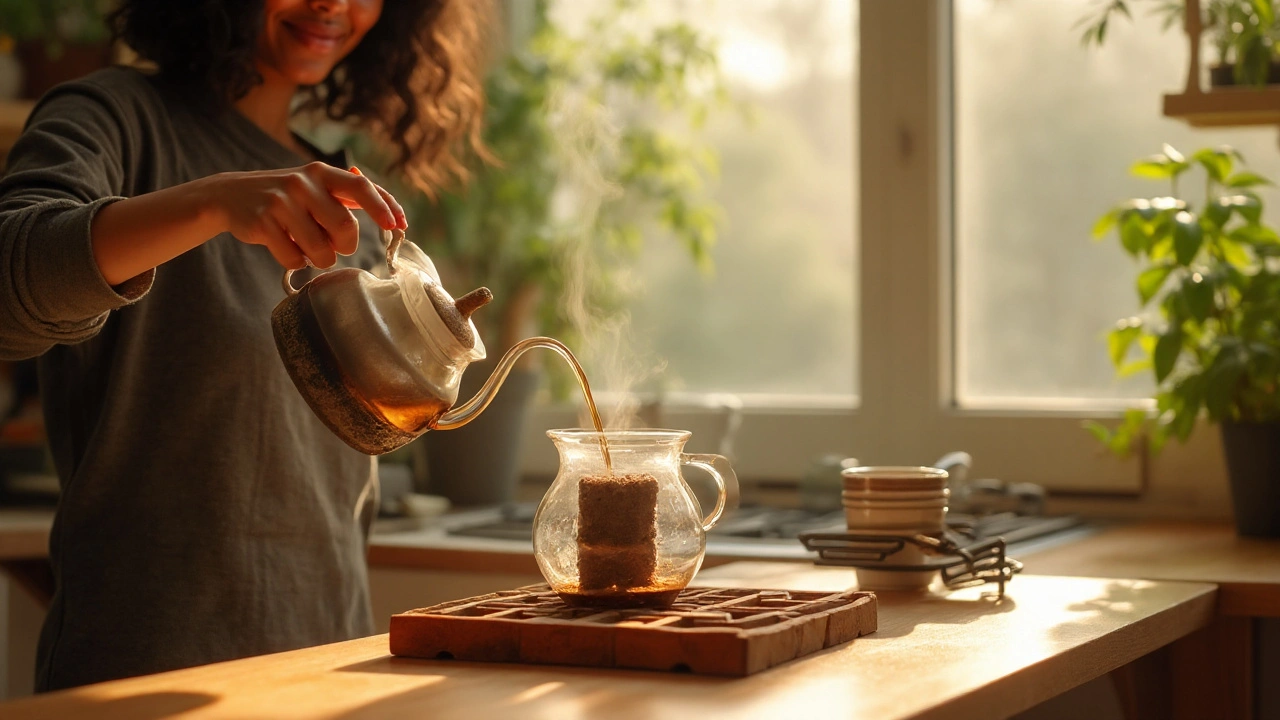If you’ve ever seen a glass of fizzy, slightly sour tea and wondered what’s up with it, you’re looking at fermented tea. It’s basically regular tea that’s been given a makeover by friendly microbes. The result is a drink that’s bubbly, tangy, and packed with probiotics. People drink it for gut health, a quick energy boost, or just because it tastes cool.
First off, the probiotic punch. During fermentation, bacteria and yeast turn sugars into acids and a tiny bit of alcohol. Those bacteria can survive the trip to your gut and help keep your digestive system running smooth. Many users say they feel less bloated and notice steadier energy levels after a regular cup.
Second, the flavor game is strong. Fermented tea can be sweet, sour, earthy, or even fruity, depending on the tea base and any added flavors. This makes it a fun alternative to coffee or soda when you want something different without a lot of sugar.
Third, it’s surprisingly easy on the wallet. A few tea bags, some sugar, and a SCOBY (the symbiotic culture of bacteria and yeast) are all you need. Once you’ve got the basics, you can keep brewing batch after batch for a fraction of the price of store‑bought bottles.
Kombucha is the most popular fermented tea, so let’s walk through a simple starter recipe. You’ll need:
Boil the water, steep the tea for 10‑15 minutes, and stir in the sugar until it dissolves. Let the mixture cool to room temperature – heat will kill the good microbes. Once it’s cool, pour it into the glass jar, add the starter kombucha, and gently place the SCOBY on top.
Cover the jar with the cloth and secure it with the rubber band. This keeps out dust but lets air in. Store the jar in a dark, warm spot (around 70‑75°F) for 7‑14 days. The longer it sits, the more sour it gets. After the first week, give it a taste. When the flavor is where you like it, remove the SCOBY, set it aside with a bit of the liquid, and bottle the kombucha. You can add fruit juice or herbs at this stage for extra flavor.
Remember to keep the SCOBY alive by feeding it with a new batch every time you bottle. If you see mold (black or green fuzzy spots), discard everything – it’s not safe to drink.
That’s it – you’ve just brewed your first kombucha! With practice, you’ll get the hang of timing, flavor tweaks, and keeping the SCOBY happy.
Whether you stick with kombucha or explore other fermented teas like pu‑erh or milk‑based kefir tea, the basics stay the same: good tea, sugar, microbes, and patience. Give it a try, and you might find a new favorite drink that supports your gut and satisfies your taste buds.

Explore the science behind pu-erh tea and its powerful health benefits, from weight management to heart health. Learn how to brew, dose, and use this fermented tea as a daily supplement.
View more